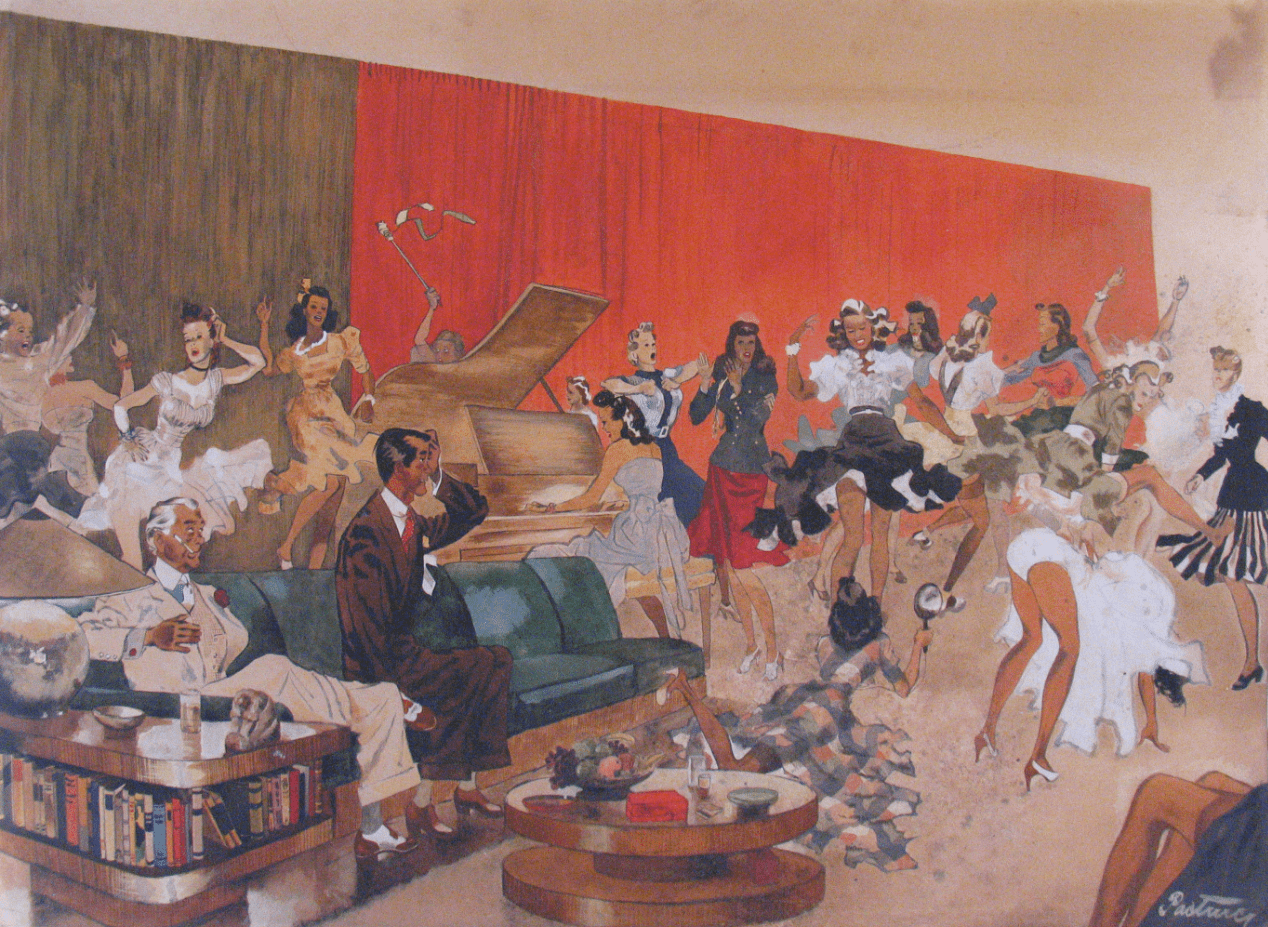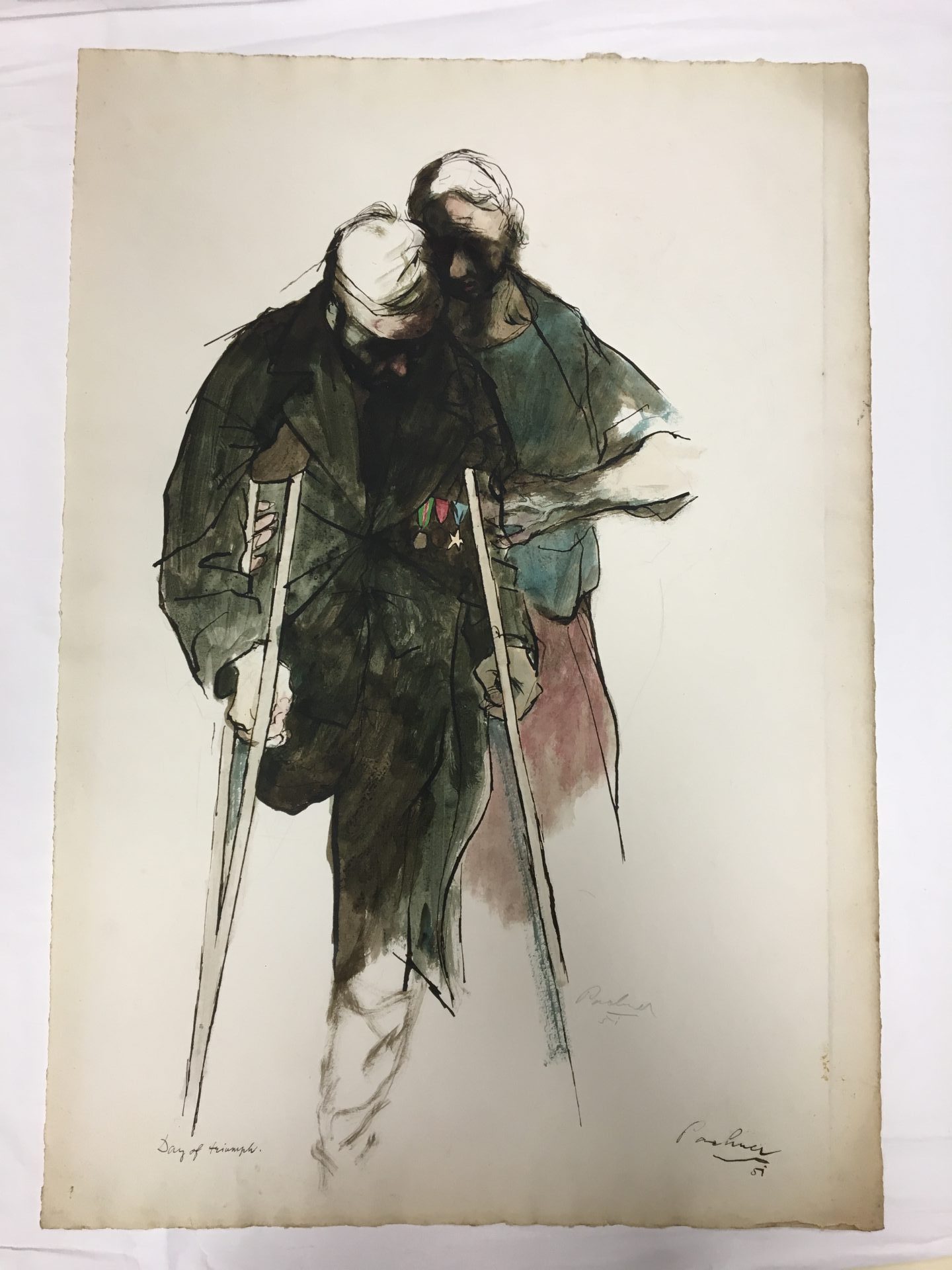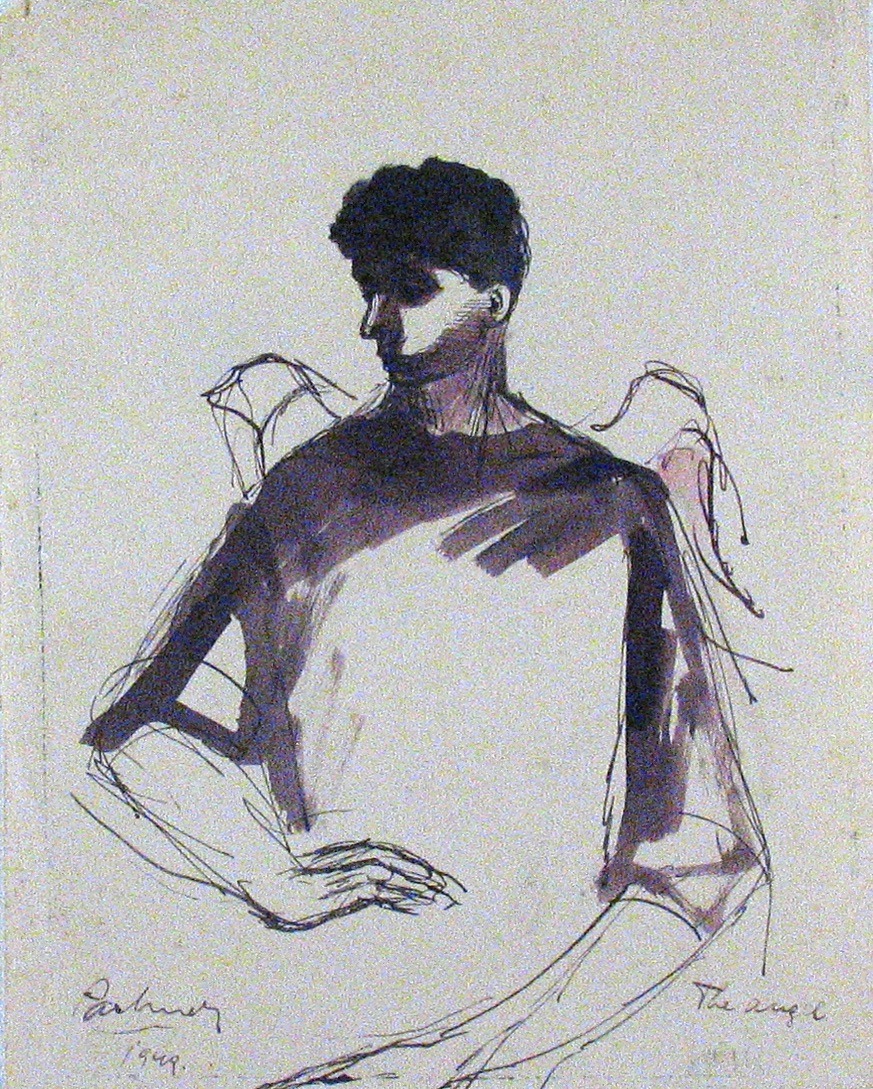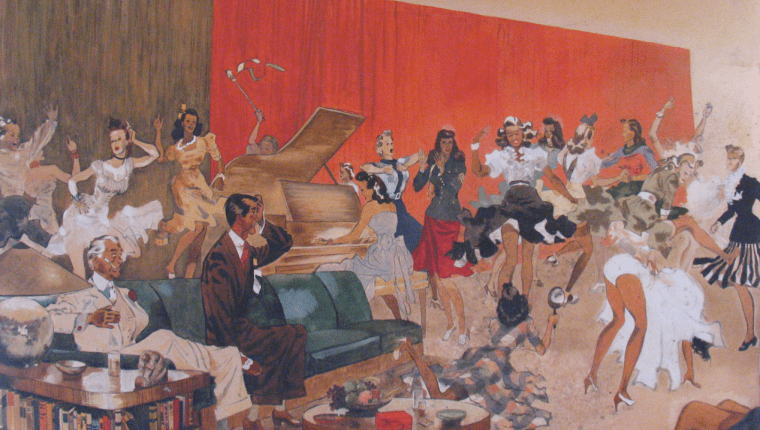On July 27, Czech-American painter William Pachner’s earliest illustrations and paintings from 1943-1951 will be on display at the Florida Holocaust Museum, many of which will be seen by the public for the first time.

The exhibition runs through January 5, 2020 and is largely based on a 2016 donation made by Pachner and his children, Ann and Charles.
William Pachner was born in 1915 in the former Moravia (now Czechoslovakia), and always had artistic inspirations and aspirations— it was what came most naturally to him, and his family sagely encouraged him to follow where his inner desires led. In 1939 Pachner left Czechoslovakia for the US to satisfy what he felt was the next step in his career, just days before the Nazis invaded his home country.
During this period, he worked as the art director of Esquire and exchanged thousands of letters with his family. By 1943 he was being called, “one of the most outstanding illustrators and fashion artists,” but felt unsatisfied that he was not contributing to the war. Pachner tried to enlist in the military but was rejected because of a childhood injury that had left him blind in one eye, leaving him compelled to give to the war effort in another way. In 1943 he left Esquire and produced a plethora of anti-fascist illustrations for many major magazines including Collier’s and Cosmopolitan.

In mid-1945, Pachner got confirmation of his beloved family’s death. He vowed, “Never again will my hand be hired. From now on, I shall use whatever gifts I have to bear witness to my experience.
“The paintings were an initial searching—very difficult,” Pachner said. His earliest paintings, beginning in 1945, contain more direct visual and emotional representations of the horrors his family and his people had suffered than his later work, and are less colorful. In his later works we can see that his perspective now includes a fuller scope— still including loss and sorrow, but now interwoven into a joyful, visually bright tapestry of life.
Pachner’s works in the 1940s and ’50s often depict multiple figures, sometimes one comforting another, as in Israel (1948), where we see an old woman being comforted by a strong yet ethereal figure whose edges melt into the sky behind him, his arm around her. Moses (1948) is perhaps the most clear with its theme, as a strong, peaceful-looking man embraces smaller figures, completely protecting them from the swirling dark sky that encircles them. (In the exhibition you will be able to see the studies for the above mentioned paintings.)
Patchner’s connection to Florida stretches back to 1951, when he was invited to teach by Mrs. Shillard Smith, founder of the Florida Gulf Coast Art Center. Three years later he had a solo exhibition at the Ringling Museum in Sarasota, and then began to teach at the Tampa Art Institute from 1957-1969 during the winter terms. He would return to Florida for many years into the 21st century until his health prevented him from doing so.

Pachner, known to his friends as Bill, was a very intelligent, optimistic, kind man, known to sing along to Mozart and devour books. Curator Erin Blankenship reminisced on the time she spent with Pachner during his time in Florida before his death in 2017 at 102: “He was a remarkable human being who really understood the need for human connection and I believe [he] conveyed that in his work.” Pachner, especially when looking from his earlier works to his later works, is truly one of the rare people who can hold opposing ideas simultaneously. He is someone who can appreciate beautiful moments in life while accepting that behind the light there is always shadow.
From Pachner we can all learn something— the value of perspective, an appreciation for life, the value of following your internal directions. Loss and Affirmations is bound to be a “behind the curtain” look at Pachner’s working and thought processes and the shifts that occurred in these processes over time.
Pachner would never talk about his personal tragedies, but as his son Charles said, “Those emotions, that history, is all right there in his paintings.”
Loss and Affirmation will be on display at the Florida Holocaust Museum in downtown St. Petersburg
July 27, 2019-January 5, 2020.



